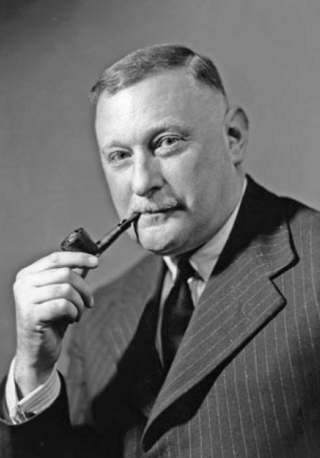
Cecil John Charles Street, better known as John Street, was a major in the British Army and a crime fiction novelist.
The gentleman detective, less commonly lady detective, is a type of fictional character. He has long been a staple of crime fiction, particularly in detective novels and short stories set in the United Kingdom in the Golden Age. The heroes of these adventures are typically both gentlemen by conduct and often also members of the British gentry. The literary heroes being in opposition to professional police force detectives from the working classes.

Dorothy Leigh Sayers, known professionally as Dorothy L. Sayers, was an English crime novelist, playwright, translator and critic.
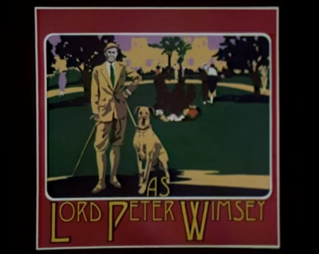
Lord Peter Wimsey is a series of television serial adaptations of five Lord Peter Wimsey novels by Dorothy L. Sayers starring Ian Carmichael broadcast on BBC One between 1972 and 1975, beginning with Clouds of Witness in April 1972.

The Riddle of the Roost is a 1939 mystery detective novel by the Irish-born writer Lynn Brock. It was the third and last in his trilogy featuring the characters of Scotland Yard detective Sergeant Venn and Constable Kither. It was Brock's penultimate novel, followed the next year by The Stoat a final entry into the series of his best-known character Colonel Gore.
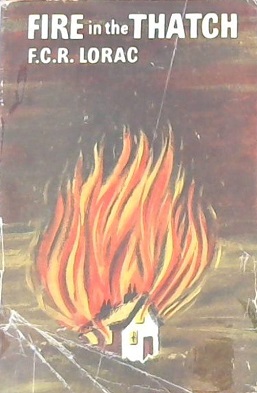
Fire in the Thatch is a 1946 detective novel by E.C.R. Lorac, the pen name of the British writer Edith Caroline Rivett. It is the twenty seventh in her long-running series featuring Chief Inspector MacDonald of Scotland Yard. Originally published by Collins Crime Club, it was reissued in 2018 by the British Library Publishing as part of a group of crime novels from the Golden Age of Detective Fiction.

The Organ Speaks is a 1935 detective novel by E.C.R. Lorac, the pen name of the British writer Edith Caroline Rivett. It is the eighth book featuring Chief Inspector MacDonald of Scotland Yard who appeared in a lengthy series of novels during the Golden Age of Detective Fiction.

Crime Counter Crime is a 1936 detective novel by E.C.R. Lorac, the pen name of the British writer Edith Caroline Rivett. It is the ninth in her long-running series featuring Chief Inspector MacDonald of Scotland Yard, a Golden Age detective who relies on standard police procedure to solve his cases. It was her first novel published by Collins Crime Club after switching from Sampson Low, partly on the success of the previous entry in the series The Organ Speaks. Collins then published the remainder the series.

Shot at Dawn is a 1934 detective novel by John Rhode, the pen name of the British writer Cecil Street. It is the nineteenth in his long-running series of novels featuring Lancelot Priestley, a Golden Age armchair detective.
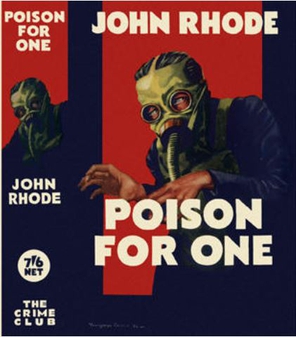
Poison for One is a 1934 detective novel by John Rhode, the pen name of the British writer Cecil Street. It is the eighteenth in his long-running series of novels featuring Lancelot Priestley, a Golden Age armchair detective. It combines elements of the locked room mystery and country house mystery.

The Case of Colonel Marchand is a 1933 detective novel by E.C.R. Lorac, the pen name of the British writer Edith Caroline Rivett. It is the fourth book featuring Chief Inspector MacDonald of Scotland Yard who appeared in a lengthy series of novels during the Golden Age of Detective Fiction.
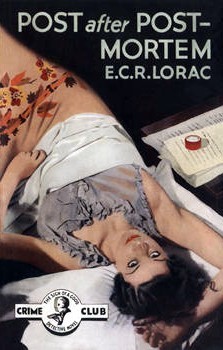
Post After Post-Mortem is a 1936 detective novel by E.C.R. Lorac, the pen name of the British writer Edith Caroline Rivett. It is the eleventh book featuring Chief Inspector MacDonald of Scotland Yard. Originally published by Collins Crime Club, it was reissued in 2022 by the British Library Publishing as part of a group of crime novels from the Golden Age of Detective Fiction.

A Village Afraid is a 1950 detective novel by the British writer Cecil Street, writing under the pen name of Miles Burton. It was part of a lengthy series of books featuring the detective Desmond Merrion and Inspector Arnold of Scotland Yard.

The Robthorne Mystery is a 1934 detective novel by John Rhode, the pen name of the British writer Cecil Street. It is the seventeenth in his long-running series of novels featuring Lancelot Priestley, a Golden Age armchair detective. It was published in the United States the same year by Dodd Mead.

The Lake District Murder is a 1935 detective novel by the British writer John Bude. It is the first in a series of novels featuring Chief Inspector Meredith, promoted at the end of case to Superintendent. Set in the Lake District of Northern England, it shows the influence of Freeman Wills Crofts's Inspector French novels by featuring a detective who methodically breaks down the alibis of his suspects. In 2014 it was reissued by the British Library Publishing as part of a group of republished crime novels from the Golden Age of Detective Fiction.

The Weight of the Evidence is a 1943 detective novel by the British writer Michael Innes. It is the ninth in his series featuring John Appleby, a young Detective Inspector in the Metropolitan Police. It was first published in America with the British release not taking place until the following year. It was published during the Golden Age of Detective Fiction. Although written during the Second World War, it is set in the pre-war era. Like a number of Golden Age mysteries including several by Innes it uses a university background, but in this case it switches from the usual Oxbridge setting to a newer Northern institution.
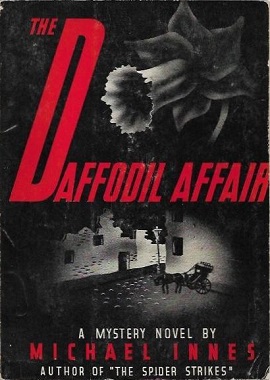
The Daffodil Affair is a 1942 mystery thriller novel by the British writer Michael Innes. It is the eighth in his series featuring John Appleby, a young Detective Inspector in the Metropolitan Police. It takes place during the early years of the Second World War. Like many entries in the series it contains elements of farcical and surrealist humour, and does not follow the standard pattern of the Golden Age detective novel. Like the previous entry in the series Appleby on Ararat it is noted for its exotic setting. In the Times Literary Supplement reviewer Maurice Willson Disher described it as "an incoherent sandwich: alternate slabs of instruction and entertainment".
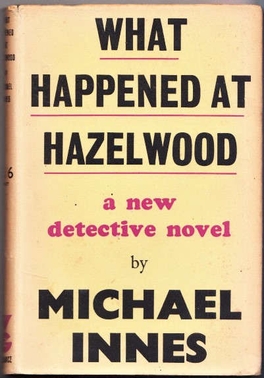
What Happened at Hazelwood is a 1946 detective novel by the British writer Michael Innes. It is a standalone novel from the author who was best known for his series featuring the Golden Age detective John Appleby. In this novel his role is fulfilled by Inspector Cadover who also appeared later in an Appleby novel A Private View. It takes the form of a country house mystery. Ralph Partridge writing in the New Statesman observed "Michael Innes may be a Professor of English in disguise but What Happened at Hazelwood would never win him a Chair of Detection. I suppose we should be grateful that it is not a surrealist thriller, and that Inspector Appleby is off duty."
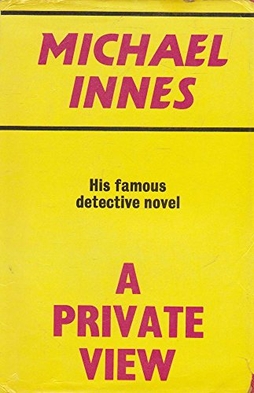
A Private View is a 1952 detective novel by the British writer Michael Innes. It is the thirteenth in his series featuring John Appleby, now an Assistant Commissioner in the Metropolitan Police. It also features the characters of Inspector Cadover and the Duke of Horton who had previously appeared in What Happened at Hazelwood and Hamlet, Revenge! respectively. Appleby's wife Judith also plays a major role in the story.


















